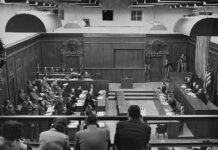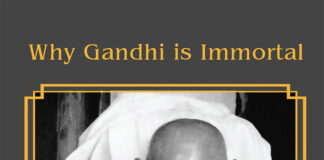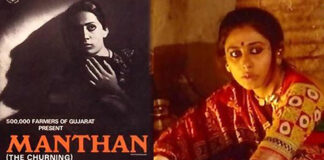
The Remarkable Life of Madankunwar Parakh aka Masa’ab (1919 – 2018)
(Part – 1)
Introduction
Between 1915 and 1947, religion and spirituality along with nationalism played important roles in developing women’s leadership. Under Mahatma Gandhi spirituality and morality became core values and the bases for Satyagraha and Sarvodaya. This phase saw the formation of many women-only organizations that were involved in community work. Since Gandhiji lived in Wardha for several years, it is only natural that many women leaders in Vidarbha were influenced – directly or indirectly – by the Gandhian philosophy. One such woman was Madankunwar Parakh of Chandrapur. Madankunwar Parakh left behind several notebooks and diaries amongst which the set titled Jeevan Yatra (The Journey of Life) provides valuable insights into the workings of the inner processes through which she emerged as a remarkable leader and social worker.
Childhood
Madankunwar Parakh was born in 1919 to a Marwari Shwetambar Jain family in the house of her maternal grandfather (nanihal) in a small tehsil town called Warora in Chandrapur district. Her grandfather Ratanchandji Kochar was a wealthy businessman who traded in gold and silver and owned 500 acres of agricultural land. Her father Champalalji Baid Mohta and mother Birjibai lived in Chandrapur and both were extremely religious persons.
When she was around two years old, her aunt took her to Mungeli in Bilaspur district of Chhatisgarh where she stayed till the age of seven. Thereafter she returned to Warora and was admitted to a local school. She proved to be a quick learner and after quickly completing her lessons she ran out to play games like kho-kho and phugadi. She was a strong-willed child and even at that tender age fearlessly complained against a teacher who used to cane the girls.
As a ten-year old, she attended the sermons (vyakhan) by wandering Jain Sants and became interested in the lives of great rulers, gods, and saints. Once in a vyakhan she heard about the importance of learning the 72 arts for men and 64 arts for women and this left a deep impact on her. In a way she remained a life-long student, absorbing the many skills and disciplines needed for leading a good and healthy life. Throughout her life Masa’ab remained a staunch follower of Jainism – she followed the rules of ahimsa, vegetarianism and served the Jain Munis and Sadhvis who came to Chandrapur, entering into discussions with them on spiritual matters.
At a very young age she learned the basics of Ayurvedic medicine from her grandmother’s dharambhai Raj Vaidya Shivnathji Vaid. From her father she learned Sanskrit and the recitation of shlokas. After watching a performance of Ram Leela she tried her hand at writing small skits which were performed by her team of friends. She went to her neighbour to learn astrology (Jyotish Shastra), but since the Panditji could only teach in Odiya and Bengali she ended up learning the rudiments of those two languages as well. She learned cycling, horse-riding and playing musical instruments like harmonium.
Those were the days of fervent nationalism. Gandhiji’s call for Satyagraha echoed in every corner of the country. The young Masa’ab learned to spin the Takali and the Charkha. She stitched tricolour flags dyed with turmeric and neem leaves and took out rallies with her friends singing nationlist songs – Jhanda ooncha rahe hamara. May our flag fly high!
Masa’ab notes in her diary under an entry titled shrimanto se nafrat that when she was twelve years old, she developed a hatred for rich men. This was because she observed that such men insult their wives and women in general. She detested the common practice amongst the rich to bring courtesans from Banaras to perform dances after the birth of a son. Masa’ab was so disgusted with the degrading treatment of women that she fervently prayed that she should never be married into a rich family.
Due to her travels between Warora and Mungeli, Masa’ab’s education did not go much beyond the second grade.
Marriage
In 1934 she was married to Rekhchandji Parakh, who, inspite of her prayers, was a wealthy businessman and agriculturist from Chandrapur city.
Rekhchandji Parakh and his father Jethmalji Parakh were forward-looking businessmen and the significant movers in Masa’ab’s life. Her diary entries make it apparent that she shared an intense relationship with her husband in which they supported each other till the very end. Two years after her marriage, Masa’ab fell ill and had to be admitted in a hospital run by Christian missionaries. From her room she could see the orphanage where nun ministered to the orphan babies. Masa’ab experienced a deep loving kindness towards the children and an admiration for the nuns.
Several years later, in 1949, a lady from another Jain family died leaving behind newborn twins apart from three older children. The woman’s husband was prepared to give up the newborns to an orphanage. The Jain community came forward to offer some money but no one was ready to help the babies. Jethmalji fumed at the hypocrisy of “the wealthy and ahimsic Jain community” and finally Masa’ab offered to bring the children home. Unfortunately, the twins were weak and neither survived. Although many praised Masa’ab for her kindness, she felt that she had caught a close glimpse of the ugly side of society.
Another time, a poor labourer called Vitthu Kunbi brought his newborn child to Jethmalji as his wife too had died at childbirth. Once again Jethmalji handed over the child to his daughter-in-law. But this time Masa’ab was aware of a difference in her own attitude. She shared with her husband in confidence that she had fallen in her own eyes. Rekhchandji was concerned at her declaration and consoled her gently.
“I had taken care of the twins who were from the Jain community without a care in the world. But when I touch this child, I end up washing my hands. Why do I feel this disgust at this tiny baby?” she said in tears.
As days passed she got involved with the child and never again did she suffer such feelings towards anybody.
Rajasthani Mahila Mandal and Sarvodaya Mahila Mandal
This was a time when Rajasthani women were still in purdah and rarely active in public life. In order to encourage them Masa’ab and a few others got together and formed the Rajathani Mahila Mandal in 1949. Yashodhara Bajaj – then a widow in her early twenties – played a very active role in the organization along with Masa’ab. The Mandal provided a space in which women of the Rajasthani community came together. They started to read books and newspapers together and taught each other crafts. Teachers were invited for sessions on Yoga and healthcare. Hindi was promoted and both Yashodhara as well as Masa’ab passed Hindi Rashtrabhasha Exams. The Rajasthani Mahila Mandal was applauded when its members offered to nurse patients during an eye operation camp organized by the government.
Masa’ab went on to address many public meetings
In 1953 the Rajasthani Mahila Mandal was renamed Sarvodaya Mahila Mandal with Masa’ab as the president. The inauguration programme was planned in the town hall. Till that time Masa’ab had never appeared unveiled in public, but how was she to preside over the meeting from behind her ghunghat? In the town hall meeting Masa’ab appeared unveiled in public for the first time and most ably chaired the meeting which was well attended by many notables of the city.
Bal Seva Mandir
Jethmalji Parakh died in 1956 and Rekhchandji discussed with Masa’ab his desire to start an orphanage in his father’s memory. Masa’ab was overjoyed but she made her husband promise that once the orphanage started, he should never rue the extra responsibility. Soon she started the Bal Seva Mandir in her own home. On the very first day, a Muslim child was brought to her. It crossed her mind that she should convert the child to Jainism and so she wrote to her Guru Shri Anand Rushiji seeking his guidance in the matter. His reply settled the matter once and for all – Madanbai, you have taken up a great task. By learning Ahimsa (non-violence) and through Sanskar (qualities) which you impart, the children are already Jains, and therefore do not allow the thoughts of ‘making’ them Jains create an obstruction to this task.
Masa’ab with the children, Bal Seva Mandir, Parakh Nivas
Shardabai, Masa’ab’s eldest daughter describes the situation in the Bal Seva Mandir thus:
Masa’ab used to sleep surrounded by tiny babies in basket cribs arranged around her bed and her whole night was spent in changing them and feeding them. Those days the servants refused to touch the babies’ clothes because of caste practices and so Masa’ab herself would sit with mounds of dirty clothes and diapers and spend hours washing them. Once a child came who was so weak that the doctor said it would die if it did not get mother’s milk. That time I was breastfeeding my child. Masa’ab called me and said – can you please breastfeed this baby too, otherwise it may die? I breastfed that child for two months. Masa’ab refused to cook anything in the house which could not be shared with the children. Make only two types of sweets in Diwali instead of four types – she would say – but make enough quantity for everyone. I will not make anything which I cannot share with every child. There were teachers who came to the house to teach the children. The children would put up plays and we played lots of games with them.
Masa’ab’s core team that ran the Bal Seva Mandir included her family. Once she noticed that some of the helpers were stealing milk meant for the children. She requested her mother, Birjibai to shift to Dhanraj Bhavan where Bal Seva Mandir was located and help her take care of the children, which she did. Another time she discussed with Rekhchandji that the government sanctioned such small amounts for the Bal Seva Mandir that these did not even cover a fraction of the costs. Rekhchandji suggested that they should run a tiffin service (khanawal) and use the profits to cover the costs.
Sometimes well-to-do families brought pregnant girls and requested Masa’ab to keep them till they delivered. Masa’ab accepted the girls with the only condition that they should live seven months after childbirth to breastfeed the baby and also help in the daily chores of the Bal Seva Mandir. The officers of the Social Welfare Department once requested her to accept 10 minor girls who had been rescued from being trafficked. Masa’ab accepted and the girls lived safely in the Bal Seva Mandir for several weeks.
Registered as Homoeopathy Practioner, 1959
Masa’ab’s abiding interest in health and medicine led her to learn homoeopathy in the city’s homoeopathy college. The Civil Surgeon of the Government Hospital Dr. Bapat also encouraged her to study medical biochemistry. She used this knowledge well in taking care of the children.
Meeting Shamsundarji Shukla and other Stalwarts
With visitors at Bal Seva Mandir
Shamsundarji Shukla, a disciple of Acharya Vinoba Bhave and committed Sarvodaya activist came to visit Sarvodaya Mahila Mandal. Masa’ab requested him to visit the Bal Seva Mandir and thereafter personally drove him there. Shuklaji was surprised to see Masa’ab in her traditional attire confidently driving the car. When she came to know that he was trying to find a suitable accommodation Masa’ab discussed the matter with her husband and soon Shuklaji was invited to set up quarters in a room at Dhanraj Bhavan and have meals with the Parakh family. Shuklaji became a supporter of Masa’ab’s activities. Through him she came in touch with many well-known personalities of those days: Dr. Bhagwat from Ratnagiri who taught her naturopathy, Umashankar Shukla from Wardha, Dada Dharmadhikari and Thakurdasji Bang who were Gandhian stalwarts. She also met the great socialist leader Jaiprakash Narayan and attended his meetings.
Refusal to Enter Politics
Masa’ab notes in her diary that around 1970 the Chief Minister of Maharashtra Yashwantrao Chavan visited Chandrapur and she was invited to the meeting along with other members of the Sarvodaya Mahila Mandal. That night her husband’s friend Uppalwarji visited them and said that Yashwantrao Chavan wanted to give Masa’ab the ticket for the upcoming assembly elections. She refused the ticket on the grounds that she would never be able to support wrongdoings by any party under the garb of party loyalty – it was better to keep away from politics. Masa’ab’s colleague Yashodhara Bajaj went on to win several elections and become a minister.
The Bal Seva Mandir closed down in 1973 by which time it had provided shelter to around 350 children. She herself had three daughters – Sharadakunwar, Shantakunwar and Sushilakunwar and adopted a son – Deepak Parekh. It was her intense desire for a son was fulfilled after meeting the mystic guru Acharya Rajneesh (Osho) in 1960, who declared her as his mother of previous birth.

– Paromita Goswami













